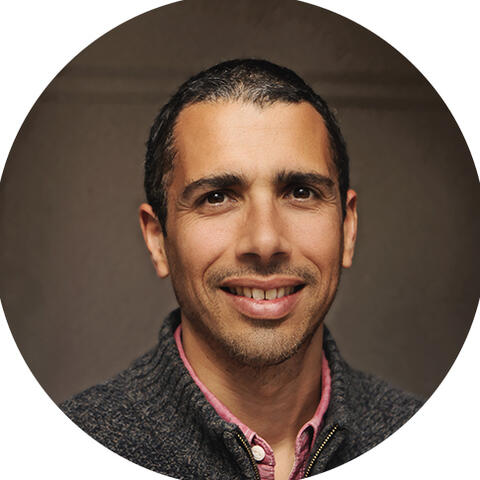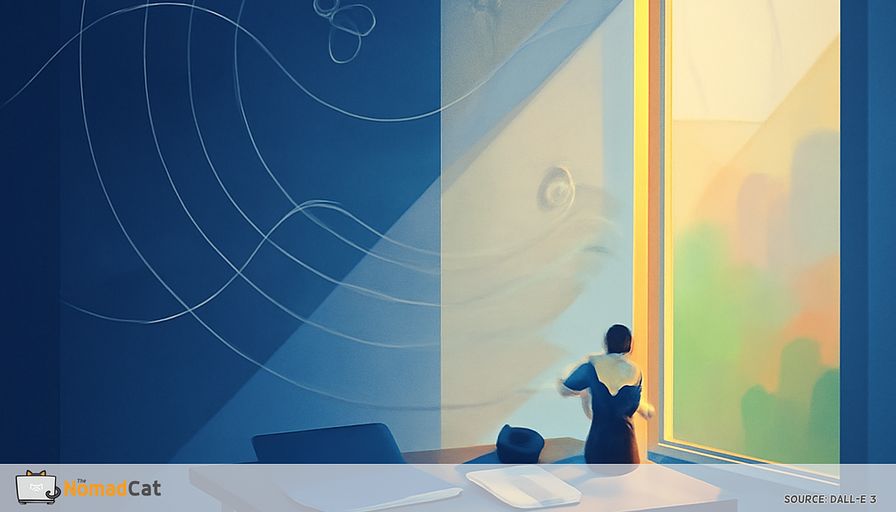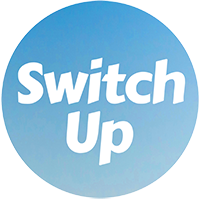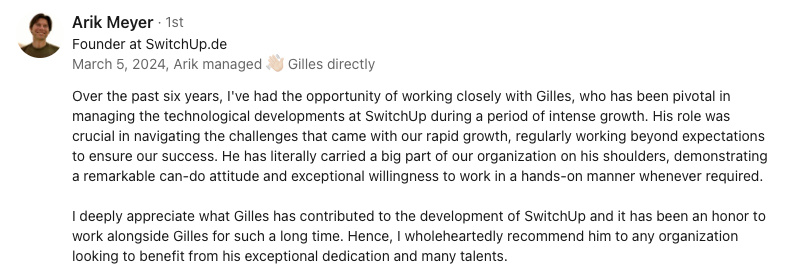Abstract:
The article emphasizes that building a sustainable routine is less about rigid productivity hacks or eliminating technology, and more about aligning daily habits with the body’s natural rhythms—such as circadian and ultradian cycles—which influence energy, focus, and mood. It explains the science behind these biological rhythms and how factors like daylight, seasons, and environment impact well-being, even for those with minimalist or low-tech lifestyles. The article offers practical strategies for mapping personal energy patterns using analog methods like journals or color-coded notes, adapting routines to daylight and seasonal changes, and creating minimalist workspaces that maximize natural light and flexibility. Distinctive examples include using simple cues—like a plant on the desk, a walk at sunrise, or analog reminders—instead of digital alerts, and a personal anecdote about finding improved focus and well-being after moving to Lisbon and working by a bright window with only a laptop and notebook. Throughout, the article maintains a pragmatic, flexible tone with gentle humor about missed alarms and cloudy days, encouraging readers to approach routines with kindness, self-reflection, and adaptability. Ultimately, it advocates for routines that are anchored in nature and adjusted through small, mindful tweaks, making habits easier to maintain and more personally meaningful—especially for those seeking less stress and more harmony with their environment.
Finding a routine that actually sticks can feel impossible, especially when your natural energy isn’t in sync with common advice. Instead of jumping to productivity tricks or cutting out all tech, I’ve found it’s simpler to work with my body’s own rhythms. Here, I’ll show how cycles like circadian and ultradian rhythms guide energy, focus, and motivation—even for those who avoid screens most of the time.
You’ll see the science behind these rhythms and why ignoring them often leads to feeling tired or out of sorts, especially after late nights or dark winter mornings. I’ll walk through practical ways to map your personal energy, adapt routines to daylight and seasons, and set up a minimalist space that makes it easier to follow the sun. Expect hands-on ideas for analog tracking, workspace tweaks, and environmental adjustments that really help.
My approach is pragmatic and flexible, with a bit of humor about missed alarms or cloudy days. Whether you want to use less tech or just crave a routine that doesn’t depend on pushing yourself, you’ll find suggestions here for making your habits feel easier, more natural, and truly your own.
Natural rhythms and routines
The science behind circadian and ultradian rhythms
Most people know what it’s like to wake up groggy after a late night. That’s often because the body’s internal 24-hour clock—the circadian rhythm—gets off track. These rhythms are synced to light and dark, setting sleep times, mood, and alertness. With all the artificial lights and unpredictable schedules, it’s easy for this inner clock to lose its rhythm. Even if I skip screens at night, city lights or late activities can still throw me off.
Shorter cycles, called ultradian rhythms, repeat every 90 to 120 minutes and shape how energy and focus rise and fall during the day. When I started paying attention to these patterns, it became easier to focus and avoid burnout. For example, after working hard for about 90 minutes, I almost always feel a dip—my body asking for a break. Allowing these cycles to guide when to concentrate and when to rest gives me more energy and less of that drained feeling.
If I ignore these signals, I end up with low energy, trouble focusing, or mood swings. Modern life, with its lights and odd routines, can cause what’s sometimes called ‘social jetlag’—that tired, off-kilter feeling. Even with low tech use, it’s a struggle when my days go against my biology. Daylight and seasonal changes also affect how I work and feel.
A sample day: working with natural cyclesHere’s a simple framework I use to structure my workday around these rhythms:
- Morning (after sunrise): Creative or deep work during my first energy peak.
- Mid-morning: Short 5-minute analog reset ritual (like watering a plant or stretching).
- Late morning: Continue focused work or meetings.
- Lunch: Step outside or sit by a window for daylight.
- Early afternoon: Lighter tasks or admin work, as my energy dips.
- Mid-afternoon: Another 90-minute focus block, followed by a reset ritual (maybe tending to my garden or a quick carpentry project).
- Late afternoon: Wrap up with simple tasks or planning for tomorrow.
- Evening: Dim lights, avoid screens, and wind down with analog activities.
I’ve found that using these cycles, with short breaks and reset rituals, helps me avoid burnout and keeps my routine sustainable.
Daylight and seasons
Morning light and energy
Waking up in a dark home, especially in city winters, is tough for me. Morning light does wonders for getting my rhythms back on track and helps me feel more awake. Without enough natural light, I feel sluggish and my sleep suffers. Seasonal changes make it even harder to stick with healthy routines.
How seasons influence mood and productivity
Long summer days often make me feel energized and motivated, while the short, grey days of winter can sap my energy and bring on the blues. That mood and energy dip after January isn’t just in your head—it’s linked to sunlight and how it affects the body and mind. Even with few screens or a stripped-back tech setup, seasons still shape how my days feel.
Why intentional routines matter for tech minimalists
Low-tech living cuts digital distraction, but it doesn’t change things like season, city living, or dark winter mornings. That’s why I craft routines to stay in tune with my natural energy. Minimalism reduces clutter but can’t solve every challenge by itself. Planning and awareness are key for keeping motivation and energy steady through all the ups and downs. I always start by watching when my own energy naturally rises and falls.
Mapping your energy
Finding your personal energy windows
Start by figuring out your personal energy patterns. I like to use a simple paper note or color-coded planner. For a week, jot down when you feel focused, creative, or tired. Sticky notes or colored pens keep it interesting. By the end of the week, you’ll likely see trends in your focus and energy. Writing things down helps spot genuine patterns, rather than guessing from memory.
When I tracked my own energy patterns over two weeks, I noticed a clear dip after lunch, so I started scheduling outdoor walks at that time. The difference was immediate: my afternoon focus improved, and I felt less irritable.
Look over a few days of notes. You might spot a daily burst of focus mid-morning, or notice your creativity climbs just before lunch. Or maybe there’s a persistent energy slump that always hits in the afternoon. These are your real rhythms, not just random ups and downs.
Try to approach this without judging yourself. Prompts like “When do I feel alert?” or “What work drains me?” can help you find honest answers. Another good one: “When do I feel most in sync with the world around me?” Being kind to yourself about what you discover encourages your routines to evolve in a natural way—no guilt is needed.
Structuring your workday around your peaks
Once you know your own rhythms, you can match your daily tasks to them. Here’s how I do it:
- Identify your peak energy times. Use your notes to spot when you feel most focused or creative.
- Schedule deep work during these periods. Block out time for important or creative tasks when your energy is highest.
- Use 5-minute analog reset rituals between focus blocks. For me, this could be watering a plant, stretching, or stepping outside for fresh air.
- Save simple tasks for slower parts of the day. Admin, email, or chores fit well here.
- Adjust as needed. If life isn’t flexible, even shifting a task by 30 minutes can help.
For example, I might start my day with creative work in my morning peak, switch to lighter tasks after lunch, and include a mid-afternoon walk. Sometimes, I break work into 90-minute focused bursts with a quick reset in between. I think of it as a rhythm that supports me, not a strict rule.
It helps to consider your personal tendencies too. Are you more of an early riser or a night owl? Early birds usually do well with important work in the morning. Night owls might save big projects for later in the day. Forcing myself to do hard tasks at the wrong time feels like running uphill. Routines feel easier when they follow what’s natural for you.
Of course, sometimes life is not flexible. Meetings or home life may land right in the middle of your best focus. Even so, shifting tasks by a half hour or moving a call can make a big difference. The goal isn’t perfection, just to get a little closer to what works best for you. Next, it helps to see how routines shift with light and the seasons.
Sample week breakdown- Monday–Friday: Track energy, use 90-minute focus cycles, and reset rituals.
- Saturday: Reflect on patterns, adjust next week’s plan.
- Sunday: Rest, spend time outdoors, or do a hobby like gardening to reset.
Routines for light and season
Bringing daylight into your day
Getting natural light in the morning really changes my mood. I like to take a short walk at sunrise or have breakfast by the window. Just a few minutes of direct daylight each morning sets me up for the hours ahead. The way my workspace is set up matters, too.
You don’t need major changes to get more daylight indoors. Try these:
- Move your desk near a window, or use lighter curtains so light comes through.
- Pick out light-colored or shiny surfaces to bounce sunlight around, like a white desk or a mirror.
- If you don’t have many windows, plan outdoor breaks or a portable setup so you can catch the sun as it moves.
These small changes bring a brighter, more energetic feel to your days, even in dark spaces. In the evenings, I switch to softer lights.
As daylight fades, I use dimmer, warmer lighting. Dimming the lights and stepping away from screens well before bedtime makes it easier to fall asleep. Simple things like analog timers or amber-colored bulbs cue my body to wind down. Softer evening lighting helps me relax and sleep well. But as seasons change, routines need some tweaks.
Adjusting routines as seasons change
When the days are longest in summer, I start earlier and stretch work hours to soak up more sunlight. In winter, low energy is common with the short, dark days, so I ease up on workload or add breaks to prevent burnout. There’s no need to push hard in the lowest light months. Sometimes, doing just enough is the best approach.
When I lived in Berlin, the winter days were so short that I had to get outside during lunch or I wouldn’t see the sun at all. In Beijing, the air pollution sometimes made daylight scarce, so I relied more on indoor light and made sure to open the window whenever the air was clear. Each city forced me to adapt—sometimes with a light therapy lamp, sometimes just by shifting my schedule.
Light therapy lamps or better indoor lighting can help when the sun is scarce. It’s important not to overdo it—use these tools carefully and check for any health tips that may apply. Getting daylight is still best when possible, even on cold or grey days.
Regular short outdoor breaks matter, even when it’s chilly or gloomy. Fresh air and natural light almost always boost my mood and energy. Minimalist routines, with their focus on simplicity and adaptation, let me adjust these seasonal strategies as my needs change.
Anchoring routines in nature
Nature-inspired routines for tech minimalists
Analog habits help bring nature into daily routines, making them feel less reliant on digital reminders. I keep a plant on my desk, a smooth rock for fidgeting, and a wooden coaster to mark work and rest times. These small signals ground me in the present and reduce the urge to reach for my phone.
Gentle, sensory cues also help mark transitions. Nature journaling lets me pay attention to little changes outside, whether it’s a shift in sunlight or a cool breeze. Slow walks, or physically pausing to check in with how I feel before switching tasks, build awareness without adding digital clutter.
A minimalist tech setup supports this as well. Instead of relying on alarms, I might find that opening a window or touching a plant is reminder enough for a break. Sometimes, the reminders that work best are the ones you can touch or see, not alerts on a screen.
Tending to my garden in the early morning became a natural reset ritual, grounding me before the workday. The rhythm of watering plants or checking on seedlings is a gentle way to reconnect with the world outside my head.
Workspaces for light
Making tech simple and portable
Having fewer or more portable devices makes it easier to move toward sunlight during the day. A simple setup—maybe just a laptop, notebook, and a pen—means I can work wherever the sun reaches, without hassle. It keeps my bag lighter and my cords less tangled, too.
A tidy workspace, natural materials, and flexible furniture make it simple to welcome light and adjust as the day goes on. Something as basic as a wooden tray, a light-toned desk, or a mirror can add interest and bounce sunlight around. These tweaks not only brighten the space, they make it easy to stay flexible.
Minimalist workspaces are good for my eyes and mind. After moving to Lisbon, I noticed that working next to a bright window with just my laptop and notebook made it easier to stay focused for longer. The reduction in clutter and digital noise lowered my stress and helped me feel less overwhelmed, especially during busy weeks. Sometimes, a new view and a bit of sunlight are all I need to freshen up my habits—though routines will always need adjusting as life goes on.
Adapting as life shifts
Gentle reflection and small adjustments
Using analog tools to check in with myself feels lighter—not another chore to dread. A simple prompt like, “Do I feel in sync with my space?” or “What’s one small tweak that could help?” is often enough. These check-ins might happen weekly or monthly, helping my routine stay responsive instead of rigid.
I keep the process simple. A paper journal or set of cards works fine. Analog tools keep the mood easy, and I’m more likely to keep up with reflection when it feels natural.
Routines don’t need to be unchanging. They can and should change with seasons, travel, or life events. Tiny tweaks often last longer than major changes, and a little flexibility is handy when life surprises you.
Balancing rhythms with outside demands
Sometimes, meetings or deadlines fall during my best or worst energy moments. If I can, I talk things out—maybe by asking for asynchronous check-ins or blocking off certain focus times. Even a little flexibility can protect my best working hours.
Minimalist setups give me room to adapt, especially when working with others. A simple ask like, “Can we move check-ins to the afternoon when I have more brainpower?” often leads to a fair compromise.
An uncluttered, flexible setup makes it easier to adjust when plans change. Following natural cues—like light and mood—instead of willpower or apps keeps me on track without extra stress.
Natural cues or willpower?
Why routines anchored in nature last longer
Routines don’t have to rely on willpower or a bunch of digital reminders. There’s something satisfying about starting work when sunlight lights up my room, or taking a break as the day cools. These kinds of routines feel natural and are easier to stick with in the long run.
Many routines powered by apps or self-discipline sort of fizzle when things get busy. It’s like trying to run on a battery that never gets recharged. Digital reminders can even add more stress if I have to keep changing my habits for new demands.
So what helps routines stick? When my daily habits fit natural cues—like light, temperature, or outdoor sounds—my sleep, mood, and focus often improve. Following these real-world signals supports health and work without feeling like a constant fight with myself.
Keeping it simple with minimalist strategies
No need for a ton of tech or complicated systems. Picking just a couple of cues—maybe going outside when the sun rises or starting lunch when the day’s brightest—can anchor your schedule. Even something as basic as opening a window to check the air or sliding a chair into the sun does the trick.
Perfection isn’t necessary. Analog signals—like sunlight, a gentle breeze, or fresh air—often do better than digital reminders. Sometimes, a chair in a sunny spot says more than an app alert, and a bit of humor about alarms or cloudy weather keeps things fun, not frustrating.
Routines that are gentle and open to change feel better and last longer. With flexibility and a sense of humor, your routines can flow with you—not against you—as time rolls on.
Finding a routine that fits is not about chasing perfect habits or forcing willpower. For me, it’s about tuning my days to things like light, the seasons, and my own energy waves. The suggestions here—tracking your own energy, letting in more daylight, and using simple tools—help routines stay light and flexible, even when things go sideways. Minimalist setups and small tweaks can take off some of the pressure and get you closer to what feels right.
I’ll be honest: I’ve had weeks where I lost my rhythm completely—like when I moved to a new city and couldn’t sleep for days. What helped was going back to basics: a morning walk, a paper journal, and a plant on my desk. By watching for natural cues and staying willing to make small shifts, my routines started to support me again, whether for work, life, or peace of mind.














